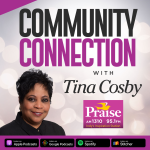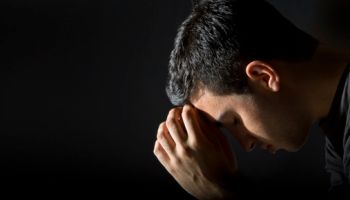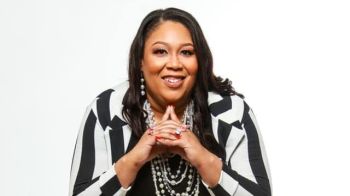via BCNN1:
It’s no secret that a legion of R&B singers trace their musical origins to the church, the aesthetics of spirituals, gospel and the blues forming the bedrock of sounds that have invigorated soul, rock, pop, and other genres. Here are some of the artists whose sounds were formed in spiritual sanctuaries.

Aretha Franklin
Daughter of Reverend C.L. Franklin of the New Bethel Baptist congregation in Detroit, Aretha Franklin was dubbed the Queen of Soul due to the full-bodied exquisiteness of her recordings, displaying a church-raised voice and understanding of musical interpretation that soared above the rest. Under Atlantic Records, the multiple Grammy winner became a household name in the mid-to-late 1960s with momentous hits like “I Never Loved a Man (The Way I Love You),” “Respect,” “(You Make Me Feel Like) a Natural Woman,” “I Say a Little Prayer,” and “Chain of Fools.” A stellar pianist as well, Franklin regularly infused her secular songs with gospel accents and phrasings, as seen with the instrumental introduction to the No. 1 R&B track “Don’t Play That Song for Me.” She ultimately had dozens of singles that reached the soul Top 10. Other luminous hits from the ’70s included “Spanish Harlem,” “Rock Steady,” “You’re All I Need to Get By,” and “Angel,” with the Queen revamping her career in the ’80s upon joining Arista Records
While having a huge canon secular tunes, Franklin released albums that focused on the church as seen with the critically acclaimed Amazing Grace in 1972 and One Lord, One Faith, One Baptism in 1987. The concert documentary Amazing Grace, chronicling the making of the album of the same name, was released posthumously soon after Franklin’s death in 2018.

Whitney Houston
Whitney Houston was born into musical royalty with the church playing a major part in her upbringing. Her mother, Cissy Houston, was part of the gospel-oriented group the Sweet Inspirations, known for their work with Aretha Franklin, and Dionne Warwick was a cousin. Houston’s self-titled debut album was released in 1985 and featured the No. 1 pop hits “Saving All My Love for You,” “How Will I Know” and “The Greatest Love of All.” The follow-up, Whitney, was a multiplatinum success with the unforgettable “I Wanna Dance with Somebody (Who Loves Me)” among other singles. I’m Your Baby Tonight and Your Love Is My Love took on a more decidedly R&B-based turn, while her soundtrack work for The Bodyguard,featuring “I Will Always Love You” and “I’m Every Woman,” as well as Waiting to Exhale yielded even more success to make her one of the biggest pop artists of all time.
Houston continued to perform church-based songs throughout her career, notably via The Preacher’s Wife soundtrack. Her earlier performance of the gospel song “Wonderful Counselor,” with mother Cissy and brother Gary at the 1988 American Music Awards, was unshakeable in its electricity and power. Yet over time, Houston’s career was famously marred by drug use, the pressures of an unrelenting spotlight and what would be viewed as a toxic marriage to fellow recording artist Bobby Brown. Houston died in 2012 at the age of 48.

Otis Redding
The son of a deacon, Otis Redding developed his skills as a performer singing as part of the junior choir in Vineville Baptist Church in Macon, Georgia, and also performed with an outside gospel quartet. The charismatic Redding, naming Little Richard as a huge influence, eventually became a renowned solo recording artist with a voice that registered strength, vulnerability and care. He had a number of hits on the R&B charts during the 1960s, including “Chained and Bound,” “I’ve Been Loving You Too Long (To Stop Now),” “Respect,” “Satisfaction,” “Try a Little Tenderness,” and “Tramp,” the latter with Carla Thomas. Redding died in a 1967 plane crash at the age of 26, abruptly ending a meteoric career. Yet his sound and the textures of his music came to define a decade for future generations, with his posthumously released “(Sittin’ On) the Dock of the Bay” becoming a No. 1 U.S. pop hit and long-time classic

Born in Washington, DC to a reverend father, Marvin Gaye started singing in the House of God church at an early age, later studying several instruments. In the early 1960s, Gaye met Motown founder Berry Gordy and worked with the label as a drummer and singer before embarking on a solo career that would lead him to become a powerhouse pop/soul act with Top 10 singles like “Ain’t That Peculiar,” “How Sweet It Is to Be Loved by You,” “I Heard It Through the Grapevine,” “Your Precious Love,” and “Ain’t Nothing Like the Real Thing.”
Having survived abuse at the hands of his father during his youth, Gaye’s career was marked by a range of concerns about the human experience. Gaye’s wish to take his artistry in a more provocatively conscious direction was evidenced with the ethereal, layered 1971 album What’s Going On. Contrastingly, his devotion to romantic love and eroticism were evidenced with other ’70s outings like Let’s Get It On and I Want You in contrast to the sets Here My Dear, dealing with divorce, and In Our Lifetime, featuring an album cover depicting the singer as both angel and demon. Gaye had a major final hit, “Sexual Healing,” before his death in 1984
CLICK HERE to read full story
12 Black Singers Who Got Their Start In Church was originally published on praisecleveland.com












